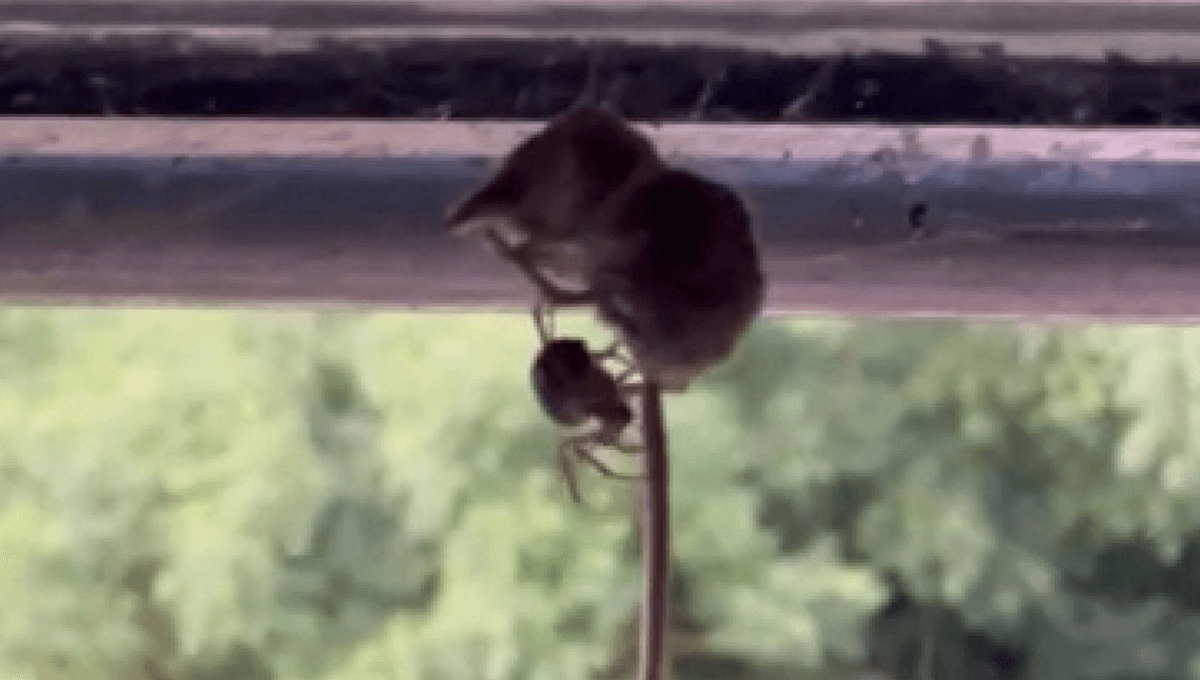
Noble false widow spiders are a widespread species living across Europe, North America, South America, and West Asia. With a large range and density across southern Britain, noble false widows have a range of adaptations and traits that have allowed them to be successful across four continents.
While noble false widow spiders (Steatoda nobilis) are one of the largest species of theridiid spider, they still only have a body size of 13.7 millimeters (0.5 inches) long. However, they are capable of predation on a range of much larger prey including lizards, bats, and now, in a gruesome new recording, pygmy shrews (Sorex minutus).
This new finding informs research that suggests the noble false widow spider is a habitual vertebrate-eating spider. The researchers report that this is the third documented case of a noble false widow predating a vertebrate in five years.
The spider was found eating the shrew in Chichester, West Sussex, southern England, representing both the first time this has been recorded in Britain and the first time a predation event on shrews by the genus Steatoda has happened anywhere in the world.
Included in the list of traits that have helped noble false widows increase their range is the ability to produce 1,000 offspring in a year, cold tolerance, and year-round activity. They also have a powerful fast acting venom.
Noble false widow venom contains the powerful neurotoxin α-latrotoxin which causes neuromuscular paralysis in small vertebrates. Research suggests that noble false widow spiders are able to adapt their predation behaviors based on the reserves of venom present in their venom glands. These spiders are also capable of hoisting their prey many centimeters into their webs to avoid secondary predation or kleptoparasites. In the observed predation event with the shrew, the spider was seen moving the prey approximately 25 centimeters (10 inches) into the rafters of the house, despite it being approximately triple the length and 10 times the weight of the spider.
The researchers suggest that given the rapid expansion in range of the noble false widow, predation events like this are likely to increase as the spiders exploit all of their behavioral traits to be successful. They also suggest that this spider belongs in the habitual vertebrate eater group rather than the occasional vertebrate eater group, owing to its size, venom, and strong silk webs. Therefore close attention should be paid to the spiders to assess their potential impact on native and protected species.
The paper is published in Ecosphere.
Source Link: Watch A Noble False Widow Spider Hoisting A Pygmy Shrew Into Its Web